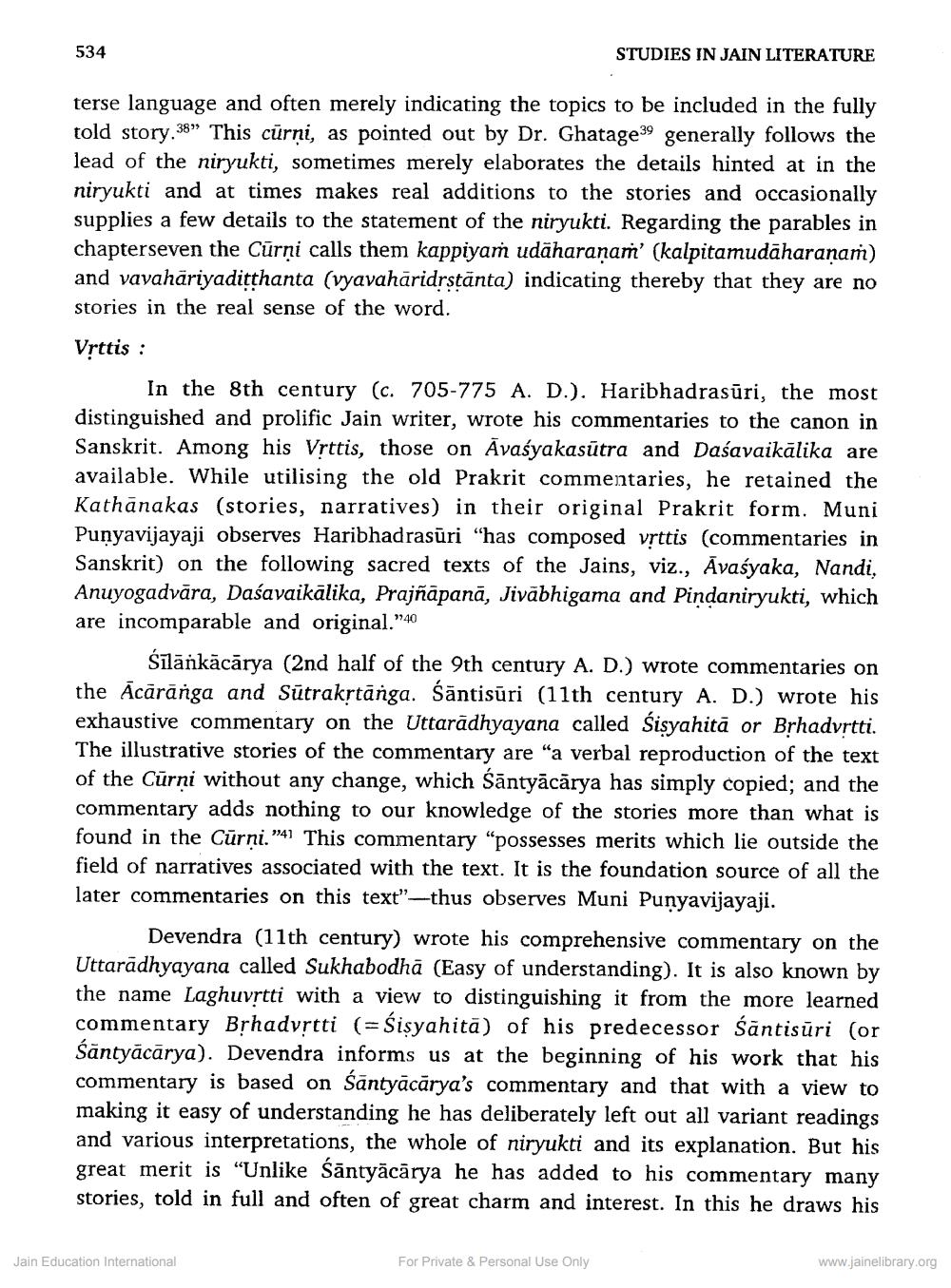________________ 534 STUDIES IN JAIN LITERATURE terse language and often merely indicating the topics to be included in the fully told story.38" This curni, as pointed out by Dr. Ghatage39 generally follows the lead of the niryukti, sometimes merely elaborates the details hinted at in the niryukti and at times makes real additions to the stories and occasionally supplies a few details to the statement of the niryukti. Regarding the parables in chapterseven the Curni calls them kappiyam udaharanam' (kalpitamudaharanam) and vavahariyaditthanta (vyavaharidrstanta) indicating thereby that they are no stories in the real sense of the word. Vrttis : In the 8th century (c. 705-775 A. D.). Haribhadrasuri, the most distinguished and prolific Jain writer, wrote his commentaries to the canon in Sanskrit. Among his Vrttis, those on Avasyakasutra and Dasavaikalika are available. While utilising the old Prakrit commentaries, he retained the Kathanakas (stories, narratives) in their original Prakrit form. Muni Punyavijayaji observes Haribhadrasuri "has composed vrttis (commentaries in Sanskrit) on the following sacred texts of the Jains, viz., Avasyaka, Nandi, Anuyogadvara, Dasavaikalika, Prajnapana, Jivabhigama and Pindaniryukti, which are incomparable and original."40 Silankacarya (2nd half of the 9th century A. D.) wrote commentaries on the Acaranga and Sutrakstanga. santisuri (11th century A. D.) wrote his exhaustive commentary on the Uttaradhyayana called Sisyahita or Brhadyrtti. The illustrative stories of the commentary are "a verbal reproduction of the text of the Curni without any change, which santyacarya has simply copied; and the commentary adds nothing to our knowledge of the stories more than what is found in the Curni. "4This commentary "possesses merits which lie outside the field of narratives associated with the text. It is the foundation source of all the later commentaries on this text"--thus observes Muni Punyavijayaji. Devendra (11th century) wrote his comprehensive commentary on the Uttaradhyayana called Sukhabodha (Easy of understanding). It is also known by the name Laghuvetti with a view to distinguishing it from the more learned commentary Brhadyrtti (=Sisyahita) of his predecessor santisuri (or Santyacarya). Devendra informs us at the beginning of his work that his commentary is based on Santyacarya's commentary and that with a view to making it easy of understanding he has deliberately left out all variant readings and various interpretations, the whole of niryukti and its explanation. But his great merit is "Unlike Santyacarya he has added to his commentary many stories, told in full and often of great charm and interest. In this he draws his Jain Education International For Private & Personal Use Only www.jainelibrary.org




